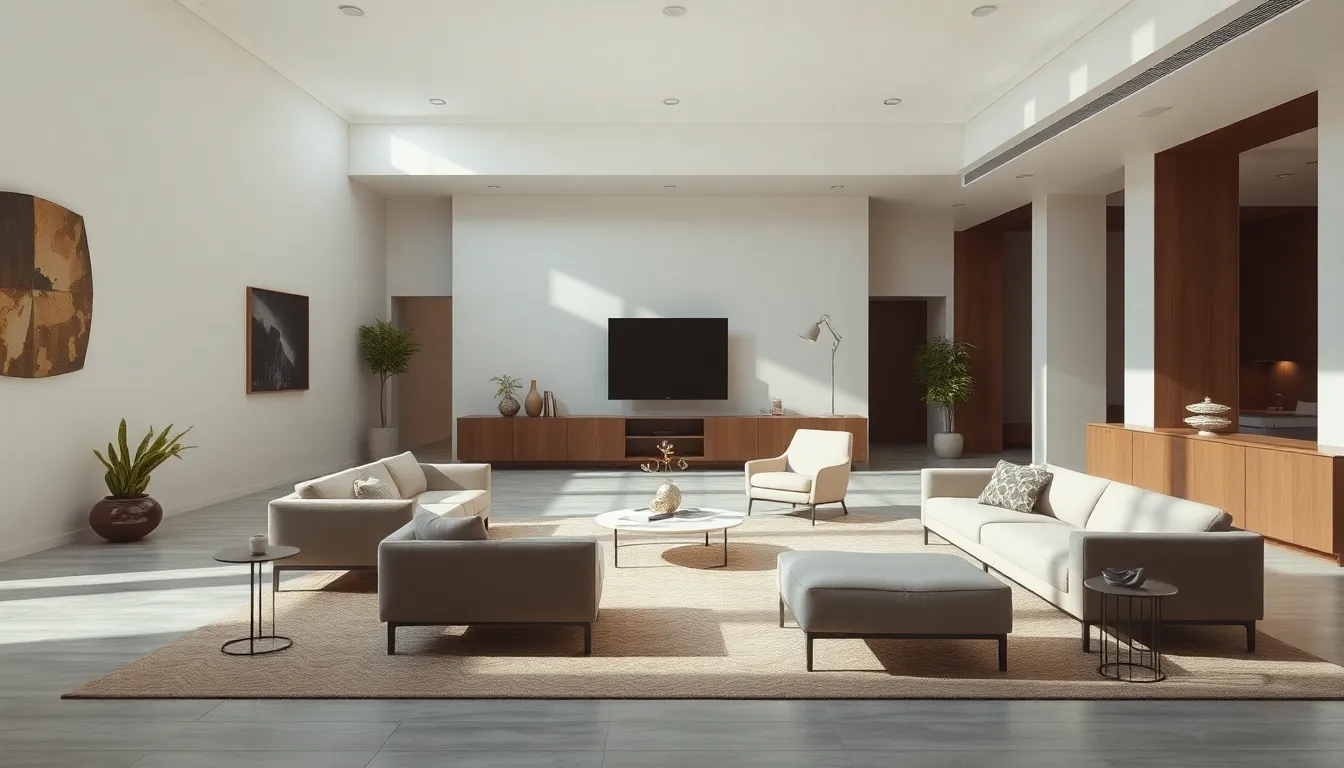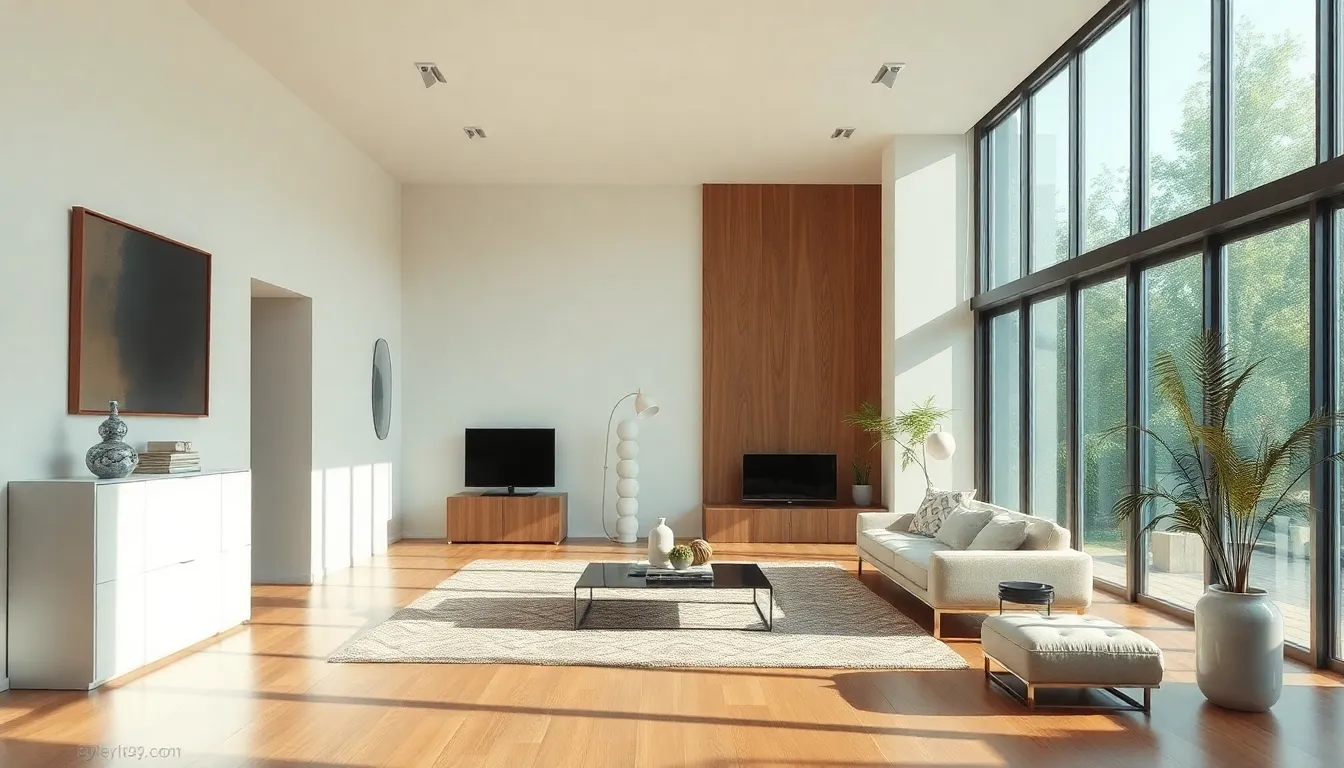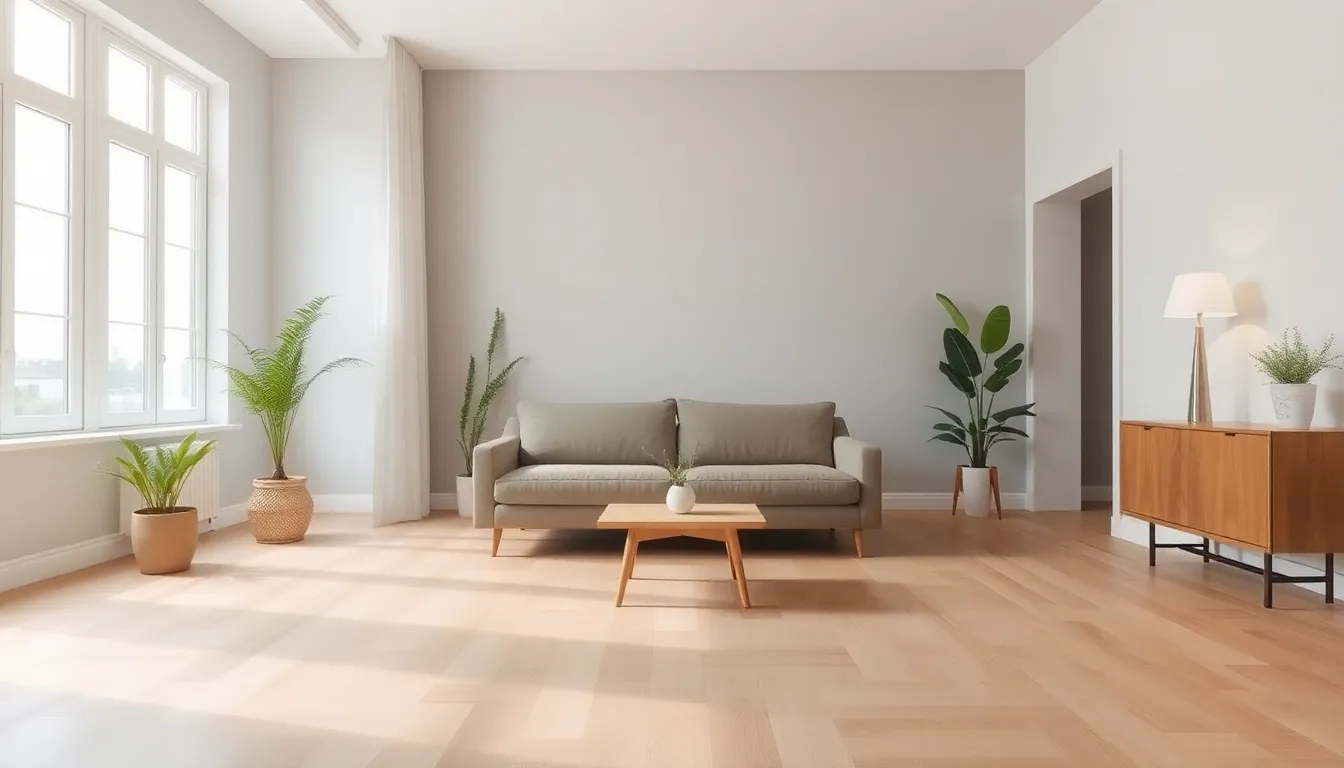Table of Contents
ToggleIn a world overflowing with clutter and chaos, minimalist design offers a breath of fresh air. Imagine walking into a space where every piece of furniture has a purpose and every color tells a story. It’s not just about less; it’s about more—more clarity, more focus, and more room for creativity. Minimalism invites individuals to strip away the unnecessary and embrace the beauty of simplicity.
But don’t let the word “minimalist” fool you into thinking it’s boring. This design philosophy can be as playful as a cat chasing a laser pointer. With clean lines, open spaces, and a dash of personality, minimalist design transforms environments into harmonious retreats. Whether you’re redecorating your home or revamping your workspace, embracing minimalism can lead to a more balanced and fulfilling life. So, why not dive into the world of less and discover the joy of more?
Understanding Minimalist Design
Minimalist design emphasizes simplicity and essential elements. This approach focuses on creating an environment that evokes clarity and tranquility.
Definition of Minimalist Design
Minimalist design refers to the practice of stripping away non-essential elements to prioritize function and beauty. It encourages the use of clean lines, open spaces, and a restricted color palette. By reducing visual clutter, this style fosters an atmosphere of calmness and enhances creativity. Essential features play a crucial role, while unnecessary distractions are minimized.
Key Principles of Minimalist Design
Key principles of minimalist design include functionality, simplicity, and harmony. Each space should serve a clear purpose, ensuring that every element contributes meaningfully. Emphasis on light and space unifies the layout, promoting a sense of openness. Additionally, a limited color palette invites tranquility while allowing focal points to shine. Cohesion among all elements reinforces the minimalist approach, creating balanced and serene environments.
The Evolution of Minimalist Design


Minimalist design has matured through various cultural shifts and artistic movements. Understanding its roots provides insight into its current relevance.
Historical Context
Minimalist design emerged in the early 20th century, rooted in movements like Bauhaus and De Stijl. These movements emphasized functionality and simplicity, stripping away excessive ornamentation. Post-World War II, architects and designers embraced minimalism to convey modernist ideologies. Japan’s Zen philosophy also influenced this evolution, highlighting the beauty of simplicity and tranquility. Through the decades, designers continuously refined minimalist concepts, adapting them to emerging trends and technologies.
Influential Movements
Several artistic movements shaped minimalist design into its contemporary form. The Bauhaus School, founded in 1919, revolutionized design education and promoted the unity of art and technology. The De Stijl movement contributed geometric forms and primary colors, enhancing clarity in design. In the 1960s and 1970s, American artists like Donald Judd and Agnes Martin emphasized minimalism in art, reflecting its principles through their works. Each movement has reinforced minimalism’s core attributes, fostering an enduring legacy that resonates in modern design practices.
Applications of Minimalist Design
Minimalist design finds application across various fields, showcasing its versatility and effectiveness in creating functional and aesthetically pleasing spaces.
Minimalist Design in Architecture
Architecture exemplifies minimalist design by emphasizing open spaces and functional layouts. Structures often feature stark lines and geometric shapes, allowing natural light to play a pivotal role. Materials such as concrete, glass, and wood dominate, promoting a clean and uncluttered look. Famous examples include the Barcelona Pavilion designed by Mies van der Rohe and the Farnsworth House by Ludwig Mies van der Rohe. Each structure prioritizes simplicity and harmony, ensuring visual appeal while serving practical purposes.
Minimalist Design in Graphic Design
In graphic design, simplicity reigns supreme. Designers often opt for clean typography and ample white space to enhance readability. Iconic brands, like Apple and Google, utilize minimalist design principles to create memorable logos and interfaces. Fewer design elements contribute to user engagement, guiding the viewer’s attention towards the message. Effective color palettes feature muted shades, ensuring cohesion and balance while avoiding distractions.
Minimalist Design in Interior Decor
Interior decor thrives on minimalist design by focusing on essential furniture and decor. Spaces often showcase neutral tones and functional furnishings that promote a sense of calm. Minimalist spaces encourage organization, allowing individuals to enjoy their environments without clutter. Notable examples include Scandinavian design, which prioritizes simplicity, natural materials, and functionality. Each component, from lighting to textiles, serves a purpose while enhancing the overall aesthetic.
Benefits of Minimalist Design
Minimalist design offers numerous advantages that enhance both environments and experiences. It emphasizes clarity, simplicity, and purposeful living.
Enhanced Functionality
Functionality thrives in minimalist design. Each element serves a practical purpose, eliminating distractions. Open spaces promote movement and ease of use, fostering efficient routines. Minimalist furnishings often feature multi-use designs, maximizing utility without excess. Storage solutions integrate seamlessly within environments, keeping clutter hidden yet accessible. Less is more; when essentials take precedence, users experience improved workflows. Projects, whether in architecture, graphic, or interior design, achieve greater effectiveness through purposeful design choices. Emphasizing what matters most leads to a harmonious balance in everyday life.
Psychological Benefits
Psychological advantages emerge from minimalist design as well. Clutter reduction correlates with decreased stress levels, creating more tranquil environments. A calm aesthetic fosters mental clarity and focus, which boosts creativity. Individuals notice greater satisfaction and fulfillment by simplifying their surroundings. Minimalist spaces promote mindfulness, encouraging connections to the present moment. The calmness stemming from a restricted color palette supports emotional well-being. Engaging with minimalist design cultivates a sense of peace, helping people feel more grounded and centered. Overall, minimalism enhances both physical and mental spaces, leading to a more balanced lifestyle.
Challenges of Minimalist Design
Minimalist design presents several challenges alongside its benefits. Understanding these challenges ensures a more thoughtful approach to implementing minimalism in various contexts.
Common Misconceptions
People often equate minimalist design with emptiness or coldness. Many believe that minimalism lacks personality or warmth, overlooking its potential for creativity and expression. Some individuals view minimalism solely as a trend, not recognizing its foundations in functionality driven by design principles. Minimalist spaces can be inviting and vibrant, filled with carefully chosen elements that reflect personal style. Clarifying these misconceptions encourages a broader appreciation of minimalist aesthetics.
Potential Pitfalls
Implementing minimalist design can lead to oversimplification, where essential elements get omitted. Designers might focus excessively on stripping away items, sacrificing functionality for aesthetics. Individuals can easily fall into the trap of believing less equals more, neglecting the need for character within a space. Misjudgment during the selection of elements could create an unwelcoming atmosphere. Adequate consideration of balance and harmony prevents such pitfalls.








